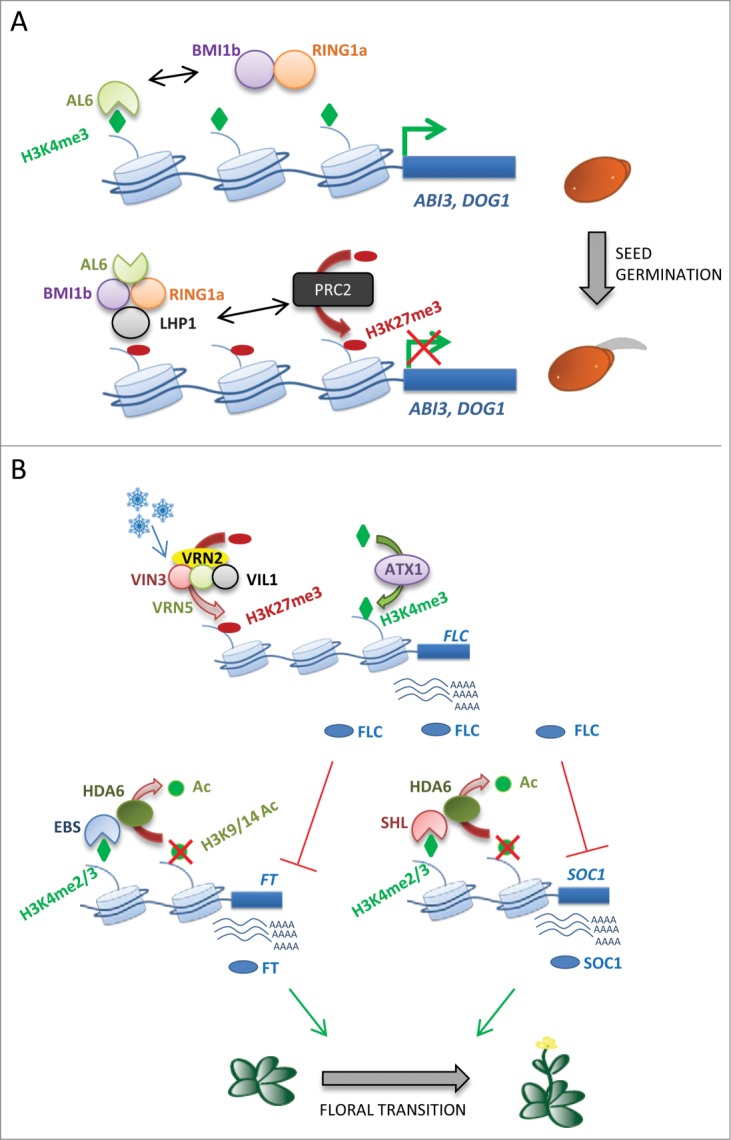Figure 1.

Hypothetical models for the functions of PHD-containing proteins in the control of plant developmental processes. (A) PHD-containing proteins of the AL family bind H3K4me3 and can interact with members of the PRC1 such as ATBMI1b and ATRING1a. Recruitment of PRC1 to regulatory regions of seed developmental genes results in the deposition of H3K27me3 and subsequent silencing of these genes. AL proteins mediate the transition from an H3K4me3- to an H3K27me3-enriched status in the chromatin of seed developmental genes, promoting seed germination. (B) PHD-containing proteins of the VEL family participate in the vernalization-dependent silencing of FLC, promoting the accumulation of the repressive mark H3K27me3. In contrast, ATX1 is required for the enrichment of H3K4me3 in the chromatin of FLC and its subsequent activation. FT and SOC1, 2 target genes of the FLC protein, are also regulated by the PHD proteins EBS and SHL, respectively. Both proteins are required to maintain low levels of histone H3 acetylation in the chromatin of these floral integrators. In addition, EBS and SHL interact in vivo with HDA6.
